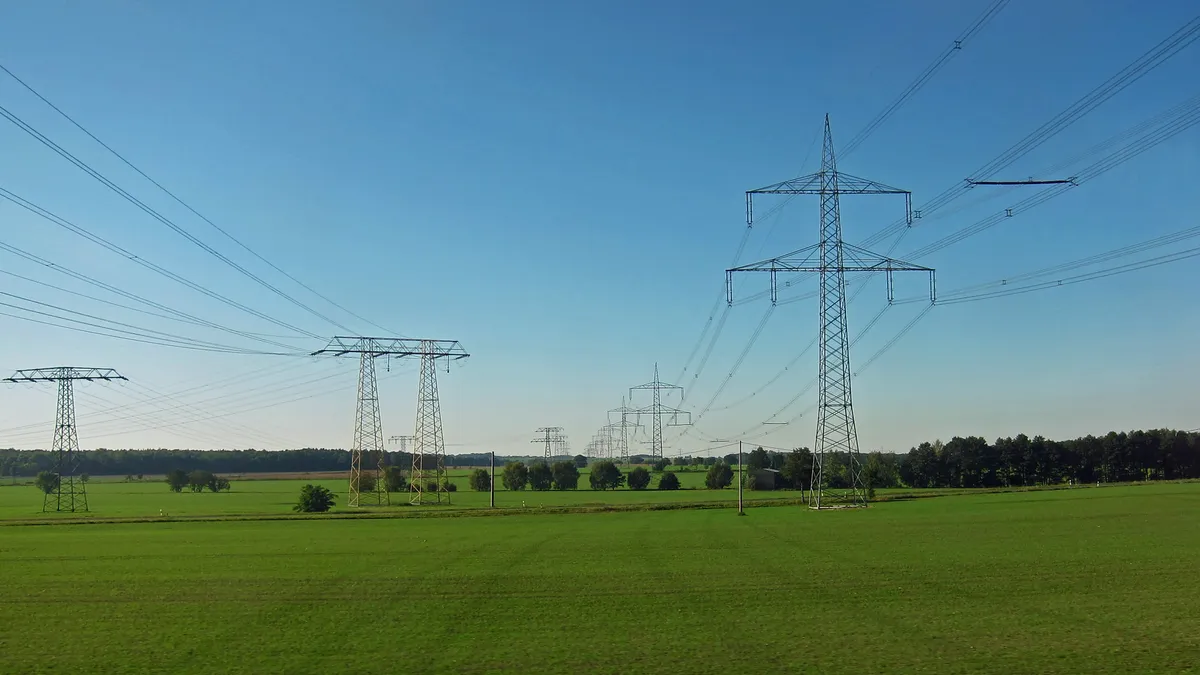Dive Brief:
-
The Department of Energy plans to launch a solicitation this year to buy capacity on proposed transmission lines, a move designed to help projects move forward by giving them increased financial certainty, according to a request for information released Tuesday.
-
The projects must carry at least 1,000 MW, or 500 MW if they are upgrades to existing facilities, and be operating before 2028, according to the proposal. DOE plans a second solicitation from its $2.5 billion Transmission Facilitation Program, or TFP, in early 2023 for capacity contracts, loans, public-private partnerships and support for certain microgrids.
-
The revolving fund could help transmission development, but it's unclear how effective it will be, according to experts. “It really comes down to how revolving in nature [the program] becomes and how quickly funds that DOE puts in can come back out,” Lynn Parins, Foley & Lardner senior counsel, said Tuesday.
Dive Insight:
The Biden administration sees building new power lines as a key step in meeting its goal of the U.S. having entirely carbon-free electricity by 2035, according to the request for information.
The TFP is part of DOE’s roughly $20 billion Building a Better Grid initiative, which was set up earlier this year with funding authorized by the Infrastructure Investment and Jobs Act.
The infrastructure law allows DOE to borrow $2.5 billion from the U.S. Treasury to effectively create a revolving fund that doesn’t need to be reauthorized.
Besides issuing loans and joining partnerships, DOE can enter into contracts for up to 50% of the capacity on eligible transmission projects, which will be the focus of the initial solicitation, according to the request for information. The department can sell the capacity to other parties to replenish the fund.
To earn a capacity contract, applicants must show their project wouldn’t move ahead “in a timely manner” or have as much capacity without DOE support.
The infrastructure law requires DOE to consult with relevant transmission planning regions about their identified transmission needs, and the department must avoid duplicating or conflicting with a region’s needs when selecting projects to support, according to the request for information.
DOE asked for comments on a series of questions, including whether there are ways to leverage the program’s funding and speed transmission development to cost-effectively increase resilience and cut greenhouse gas emissions while promoting economic growth and energy justice.
The department also wants to know if it should enter into contingent offers with multiple entities, and award final capacity contracts to the projects that reach significant milestones first.
The initial solicitation could support some of the 22 shovel-ready transmission projects identified by Grid Strategies and Americans for a Clean Energy Grid in an April 2021 report, according to Sam Porter, who represented merchant transmission developers as senior counsel at Norton Rose Fulbright.
In a major benefit, the TFP could help some transmission projects receive financial backing.
“If the DOE is doing [funding] in smaller increments, perhaps that's enough in any given project to give outside investors a little more comfort that what they're investing in is a viable transmission project,” Parins said.
Before agreeing to support a transmission proposal, DOE will conduct diligence on the project, which can help attract financing, according to Kenneth Hansen, a Norton Rose Fulbright partner and expert on DOE’s Loan Guarantee Program for innovative and alternative energy projects.
“The fact that DOE has scrutinized the project and decided it's worth supporting is a good thing,” Hansen said Tuesday. “In the energy bank market, it's a serious credential.”
The program could spur transmission projects, which face challenges that include long development incubation periods and various risks that can increase costs, lengthen timelines and erode profit margins, according to Porter, founder and CEO of NeuPorter, a midstream pipeline company focused on clean hydrogen.
“From a developer’s perspective I think it does help, but for me personally, not enough to make me want to develop any transmission projects that cross state lines or span more than a single [regional transmission organization,]” Porter said in an email.
Any federal investment in transmission through the TFP would be helpful for grid development, according to Parins. “It's good news overall,” Parins said. “Whether it's the thing that's going to unlock it for mass investments, I think, is an open question."














